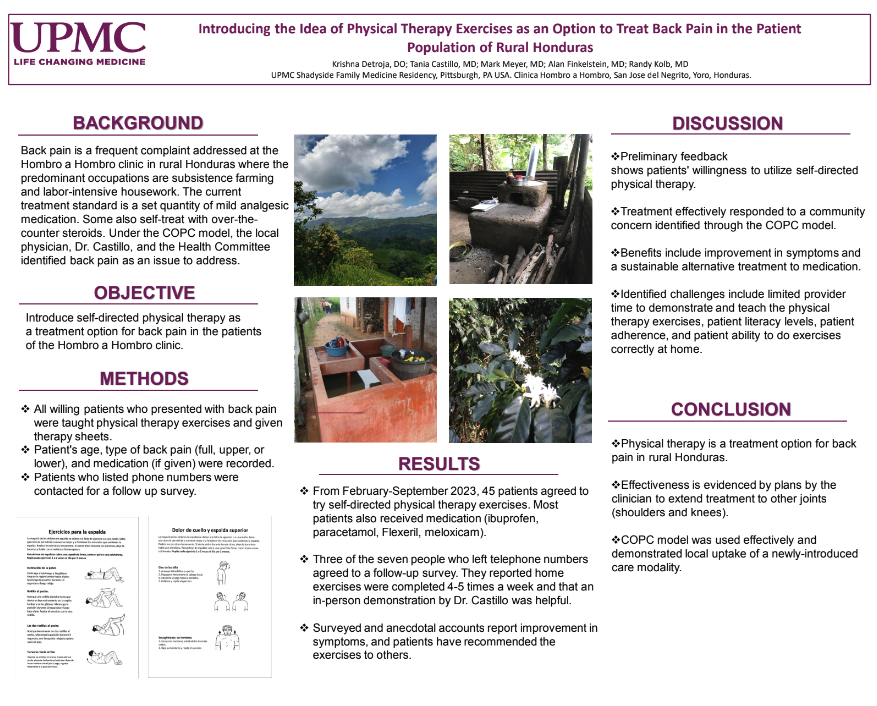Family Practice Physician, University of Tennessee - Rocky Hill Family Physicians, Knoxville, Tennessee
Introducing the Idea of Physical Therapy Exercises as an Option to Treat Back Pain in the Patient Population of Rural Honduras
Authors:
Krishna Detroja, DO; Tania Castillo, MD; Mark Meyer, MD; Alan Finkelstein, MD; Randy Kolb, MD
Background:
Back pain is a frequent complaint addressed at the Hombro a Hombro Clinic in rural Honduras. The predominant occupation in this area is subsistence farming for men and labor-intensive housework for women. The current treatment standard is ibuprofen or paracetamol. Patients receive a set quantity of the medication as supplies are limited. Some patients also self-treat withover-the-counter steroids. Under the Community Oriented Primary Care (COPC) model, the local physician, Dr. Castillo, and the Health Committee identified back pain as an important
issue to address. They requested help implementing physical therapy as a treatment for back pain. Physical therapy exercises were demonstrated and practiced with Dr. Castillo and exercise instruction sheets from the website Health Information Translations were approved by local staff for appropriate dialect, language levels, and content, and were distributed to patients who presented with back pain.
Methods:
The project goal was to introduce physical therapy as a treatment option for back pain in patients in the Hombro a Hombro Clinic. Patients who reported back pain and were willing to try physical therapy were taught the exercises and given therapy sheets.
Findings:
From February-September 2023, there is documentation of 43 people agreeing to try physical therapy. Patient satisfaction with this modality was assessed with follow-up surveys. Three of the seven people who left telephone numbers agreed to a follow-up survey. Feedback shows patients' willingness to utilize this modality and reported improvement with it. Dr. Castillo reports a noticeable decrease in requests for analgesics and decreased self-treatment with steroids. Physical therapy instruction for other body regions has also been requested.
Interpretation:
Ongoing challenges include limited provider availability to demonstrate and teach physical therapy exercises, patient literacy levels, patient adherence, and patients' ability to do exercises correctly at home. Future activities can expand upon alternate ways to teach patients exercises, including using non-physician volunteers to decrease provider burden and encouraging adherence.

